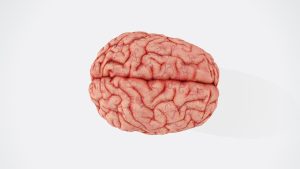By Aria Brent,
AFRO Staff Writer
Within the last few years there has been a lot of awareness regarding Autism Spectrum Disorder (ASD) and what neurodivergence is. As people grow more aware of what “being on the autism spectrum” means, more family members and friends are learning how to care for the neurodivergent.
To understand common behaviors one might notice about a neurodivergent individual, the AFRO spoke with Sharnita Harris, Ph.D, director of psychology services at Nationwide Children’s Hospital in Toledo, Ohio.
“We have to note that no two children with autism are the same– just like no two people are the same. Symptoms may present differently from one child to the next, considering that we are thinking about a spectrum,” stated Harris. “Overall with the diagnosis of autism, it’s characterized by difficulties establishing and maintaining social relationships, difficulties with social emotional reciprocity and limitations with sharing interest or no showing of interest at all.”
With her passion for diversity, equity and inclusion and a background in neurodevelopmental disabilities, she has been able to shine a light on how to create inclusive and well rounded spaces fit for both neurodivergent and neurotypical students.
Autism is a very personal disorder that needs specialized treatment for every single person who deals with it.
According to the Center for Disease Control and Prevention’s Autism and Developmental Disabilities Monitoring (ADDM) , “about 1 in 36 children” are identified as being on the autism spectrum. “ASD is reported to occur in all racial, ethnic, and socioeconomic groups” and “is nearly 4 times more common among boys than among girls.”
Although there isn’t a copy and paste formula, there are things that are guaranteed to make students with autism feel seen and cared for. Here’s five ways to support neurodivergent students.
- Do not isolate them
Providing inclusive and safe spaces for autistic students is important. Some students may not participate in academic or social settings in a traditional way, but creating an environment where they feel comfortable enough to be themselves is vital.
“Creating safe and inclusive environments starts by educating school personnel, students and parents about ASD and then celebrating all types of diversity–including neurodiversity! No two students with autism are the same, so therefore it’s important that teachers and staff be familiar with the needs of each individual student so that we can foster a positive educational experience for that student.“
- Learn their communication style
Some students with autism communicate in a traditional way by using their voices. Others are non-verbal and communicate with the help of an aid. Regardless of how they communicate, know that students with ASD can understand you and communicate with you when equipped with the proper resources.
Rayona Dawson- Spencer is the mother of seven-year-old Jael Gray, who is non-verbal but very communicative.Though Jael has trouble verbally expressing himself by talking, he does very well with receptive language and understands what is being said to him.
Spencer noted just how important other variations of communication such as body language are when communicating with non-verbal people.
“Autism is technically more of a social communication disorder, than it is a cognitive disorder. Jael, and most autistic individuals who are non-verbal or introverted and to themselves, are associated with the idea of not being able to communicate at all. However, communication mostly relies on body language or eye contact– a lot of it is non-verbal,” said Spencer. “Your tone of voice and inflection fall kind of low on the list when it comes to communication.”
- Bring awareness to ASD
Although ASD is receiving more attention and people are becoming more informed about it, many still don’t know how to interact with autistic people. Educating community members and those who come into contact with someone on the spectrum is a great way to bring awareness and positive messages to the ASD community. Harris suggests getting involved with programs that focus on pairing neurodivergent and neurotypical students together, affording opportunities for more exposure and first hand interactions with autistic students.
- Empathize with their perspective
Being mindful of the perspective of those in the ASD community is vital to the support and empowerment of them.
“Lots of people only seem to view things through their own perspective, failing to realize that multiple perspectives can exist at once,” Spencer noted. “Whether it be a difference in communication styles or an academic struggle they’re facing, empathizing with the difficulties they face on a daily basis helps.”
This not only allows you to further understand them as a person but it can also help you build a strategy to help them overcome these challenges.
- Make sure they have a support team
Building partnerships between parents, schools and medical teams are essential to the support of students with autism. Making sure that everyone is on one accord. The student should be included as much as possible when identifying the needs of the student.
“I can not emphasize enough—the collaboration between caregivers, teachers and members of the medical team! I feel like that wrap around approach helps set the student up for success,” said Harris. “When everybody can get on the same page, in the best interest of the child, so many opportunities and doors open and that’s the space where the magic really happens!”
The post Five ways to support neurodivergent students appeared first on AFRO American Newspapers .










